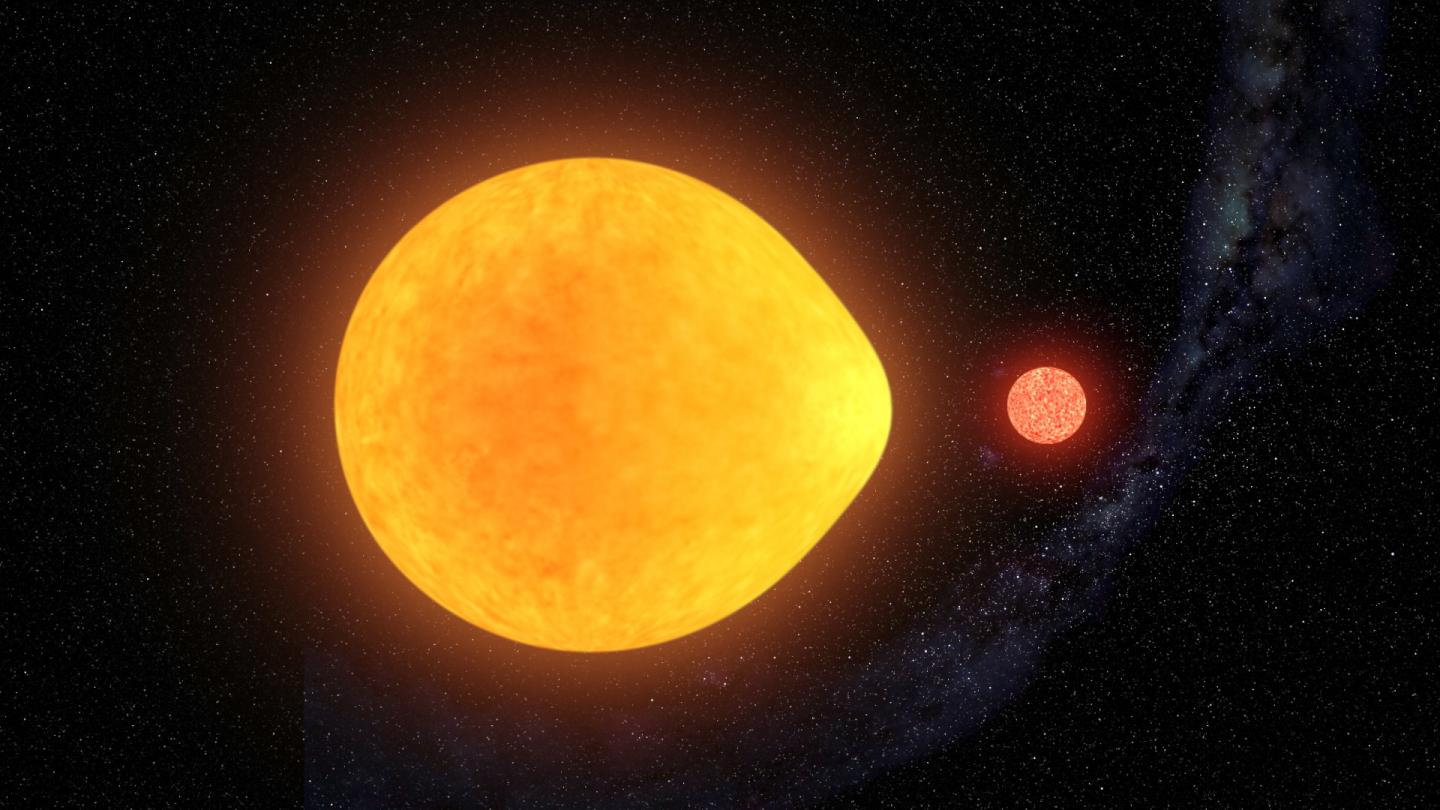Weird new star type pulses on only one side
Astronomers have finally found something they have spent decades searching for: a teardrop-shaped star that pulsates on only one side.
Citizen scientists helped the discovery team find the strangely lopsided star, which is known as HD74423, in data gathered by NASA's Transiting Exoplanet Survey Satellite (TESS). The star is about 1.7 times the mass of Earth's sun, and scientists determined that HD74423's weird pulsing is caused by a second, smaller star.
"I've been looking for a star like this for nearly 40 years, and now we have finally found one," study co-author Don Kurtz, an astronomer at the University of Central Lancashire in the U.K., said in a statement released by the University of Sydney, where Kurtz is temporarily based.
Related: Binary star systems: Classification and evolution

Pulses are nothing new to astronomers; even our own sun's surface fluctuates. But until now, every star's pulses have been visible around the entire surface. That's not the case for HD74423. That turns out to be because the star is a binary star, accompanied by a red dwarf star that is much smaller than our own sun. As the red dwarf whips around its larger companion every two days, its gravity pulls on HD74423. This tug distorts the surface of the larger star into a teardrop shape, also distorting the oscillations.
TESS was able to observe variations in the star's brightness during this distortion. The data was posted on the crowdsourcing website Planet Hunters TESS, where citizen scientists noticed that something weird was happening. Often, fluctuations in a star's light can be traced to a planet crossing across the face of that star — this is the entire premise of the TESS mission. Such fluctuations, however, may also stem from stellar activity, as in the case of HD74423.
The scientists who picked up on the Planet Hunters' interest found that the strength of the pulsation fluctuates in sync with the orbit of the binary.
Get the Space.com Newsletter
Breaking space news, the latest updates on rocket launches, skywatching events and more!
"As the binary stars orbit each other, we see different parts of the pulsating star," co-author David Jones at the Institute of Astrophysics in the Canary Islands said in the same statement. "Sometimes, we see the side that points towards the companion star, and sometimes we see the outer face."
A study based on the research was published Monday (March 9) in the journal Nature Astronomy.
- How to tell star types apart (infographic)
- NASA's TESS exoplanet-hunting mission in pictures
- See the best-ever imagery of a star beyond the sun (photos, video)
Follow Elizabeth Howell on Twitter @howellspace. Follow us on Twitter @Spacedotcom and on Facebook.
OFFER: Save at least 56% with our latest magazine deal!
All About Space magazine takes you on an awe-inspiring journey through our solar system and beyond, from the amazing technology and spacecraft that enables humanity to venture into orbit, to the complexities of space science.
Join our Space Forums to keep talking space on the latest missions, night sky and more! And if you have a news tip, correction or comment, let us know at: community@space.com.

Elizabeth Howell (she/her), Ph.D., was a staff writer in the spaceflight channel between 2022 and 2024 specializing in Canadian space news. She was contributing writer for Space.com for 10 years from 2012 to 2024. Elizabeth's reporting includes multiple exclusives with the White House, leading world coverage about a lost-and-found space tomato on the International Space Station, witnessing five human spaceflight launches on two continents, flying parabolic, working inside a spacesuit, and participating in a simulated Mars mission. Her latest book, "Why Am I Taller?" (ECW Press, 2022) is co-written with astronaut Dave Williams.
-
premachandran HD74423 and its smaller red dwarf appears exactly like the earth and its moon. As the moon revolves around the earth it causes the oceans to bulge towards it causing the tides. HD74423 binary behaves similarly. rather than a pulsating star it looks like stellar tides.Reply











